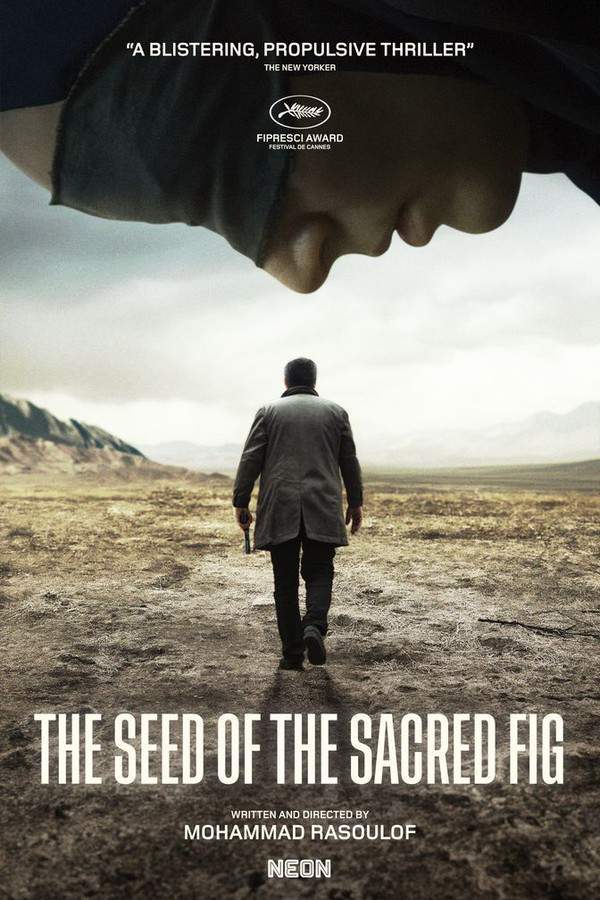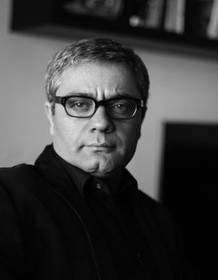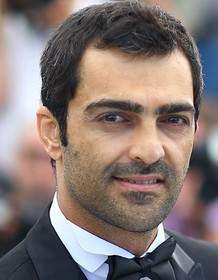The Seed of the Sacred Fig 2024

Judge Iman, a man tasked with upholding justice, finds himself consumed by paranoia as political turmoil engulfs Tehran. After his service weapon disappears, he becomes increasingly suspicious of his own wife and daughters, implementing strict and controlling measures within his household. These actions create significant tension and fracture family relationships, mirroring the broader societal breakdown occurring around him.
Does The Seed of the Sacred Fig have end credit scenes?
No!
The Seed of the Sacred Fig does not have end credit scenes. You can leave when the credits roll.
Meet the Full Cast and Actors of The Seed of the Sacred Fig
Explore the complete cast of The Seed of the Sacred Fig, including both lead and supporting actors. Learn who plays each character, discover their past roles and achievements, and find out what makes this ensemble cast stand out in the world of film and television.
External Links and Streaming Options
Discover where to watch The Seed of the Sacred Fig online, including streaming platforms, rental options, and official sources. Compare reviews, ratings, and in-depth movie information across sites like IMDb, TMDb, Wikipedia or Rotten Tomatoes.
Ratings and Reviews for The Seed of the Sacred Fig
See how The Seed of the Sacred Fig is rated across major platforms like IMDb, Metacritic, and TMDb. Compare audience scores and critic reviews to understand where The Seed of the Sacred Fig stands among top-rated movies in its genre.

The Movie Echo Score
The Seed of the Sacred Fig offers a compelling fusion of intimate family drama and political resistance. Critics commend its absorbing mixture of understated direction and immersive realism, noting its urgent thematic focus and visually arresting compositions. While its pacing can falter in the final act and some narrative moments feel uneven, the film’s emotional resonance and provocative content remain strong. Overall, the movie stands as an important and engaging work, even if its structural inconsistencies slightly limit its impact.
The Movie Echo Score Breakdown for The Seed of the Sacred Fig

Art & Craft
In terms of art and craft, the film excels with restrained yet expressive direction and cinematography. Critics highlight its unflashy visual style and composed framing, while users praise the authentic integration of real footage and location shooting. Even accounting for some editorial sluggishness, the production design and visual coherence deliver a clear, purposeful aesthetic.

Character & Emotion
In terms of character and emotion, the film features nuanced, understated performances that anchor its personal stakes. Reviewers note the depth of the central family dynamic and the palpable tension between generations, complemented by credible emotional arcs. Though some performances dip in the laboured final stretch, the overall chemistry and character development are consistently effective.

Story & Flow
When it comes to story and flow, the narrative remains engaging but suffers from occasional pacing irregularities. Critics mention a laboured third act and some implausible turning points, while several users appreciate the sustained dramatic tension and thematic urgency. Despite structural unevenness, the plot maintains sufficient momentum to keep viewers invested in its political and familial conflicts.

Sensory Experience
Regarding sensory experience, the film achieves a visceral impact through its sound design and documentary-style visuals. Observers praise the intense soundtrack and effective use of real protest footage, which heightens the film’s immersive quality. While the symbolism can feel heavy-handed at times, the cohesive audio-visual approach delivers a compelling atmospheric presence.

Rewatch Factor
In terms of rewatch factor, the movie offers significant thematic value but may challenge repeat viewings due to its intensity and length. Users value the emotional insights and political nuance but note that the heavy subject matter and nearly three-hour runtime limit casual re-engagement. Consequently, the film’s lasting appeal is substantial but tempered by its demanding content and structural density.

84
Metascore
7.7
User Score


97%
TOMATOMETER

94%
User Score

4.0
From 346 fan ratings

0.00/5
Take the Ultimate The Seed of the Sacred Fig Movie Quiz
Challenge your knowledge of The Seed of the Sacred Fig with this fun and interactive movie quiz. Test yourself on key plot points, iconic characters, hidden details, and memorable moments to see how well you really know the film.
The Seed of the Sacred Fig Quiz: Test your knowledge on the themes, characters, and events of 'The Seed of the Sacred Fig'.
What profession does Iman, the main character, hold?
Awards & Nominations for The Seed of the Sacred Fig
Discover all the awards and nominations received by The Seed of the Sacred Fig, from Oscars to film festival honors. Learn how The Seed of the Sacred Fig and its cast and crew have been recognized by critics and the industry alike.
Full Plot Summary and Ending Explained for The Seed of the Sacred Fig
Read the complete plot summary of The Seed of the Sacred Fig, including all major events, twists, and the full ending explained in detail. Explore key characters, themes, hidden meanings, and everything you need to understand the story from beginning to end.
Iman is a deeply principled and honest lawyer who finds himself in a precarious situation as he navigates his new role as an investigating judge in the Revolutionary Court of Tehran. He shares his life with his devoted wife, Najmeh, and their two daughters, Rezvan and Sana, who are unaware of the turmoil that is about to envelop their family. With the appointment comes a promise of a better salary and more space for his loved ones, but this newfound position is not what it seems. Instead of utilizing his esteemed legal skills, Iman is merely a puppet, forced to rubber-stamp grim judgments handed down by his superiors without engaging with the evidence or even considering the human lives at stake—this includes the harrowing approval of death sentences.
As political protests erupt across the nation, challenging the authoritarian grip of the government, Iman quickly realizes that his career has placed him in an agonizing ethical dilemma. He is instructed to keep his role a secret from his family and friends, who could become pawns in a cruel game of manipulation. This isolation is compounded when the government provides him with a handgun for his family’s defense, an item he is utterly unprepared to manage. The irony is stark: he is tasked with protecting his family while simultaneously feeling powerless to safeguard their well-being.
As the protests grow more intense, Iman’s daily routine becomes rife with anxiety and distrust. He is pushed to sign hundreds of death sentences, a stark contrast to the man who once held truth and justice in high regard. Meanwhile, his daughters, Rezvan and Sana, delve into the unfolding chaos via their cell phones, their horror mounting as they witness the violence against their peers. The tension reaches a boiling point at the dinner table when they challenge their father’s dismissive attitude towards their concerns, viewing their feminist beliefs as mere propaganda of the so-called enemy. Najmeh, sharing Iman’s devout outlook, advises the girls to sever ties with their revolutionary peers, fueling a growing rift within the family unit.
The situation escalates when tragedy strikes—Sadaf, a close friend of Rezvan, is brutally shot in the face during a demonstration against mandatory hijab laws. In an act of defiance against Iman’s strict and fear-driven demands, the women conceal this traumatic event from him, although it only serves to deepen the fracture. As paranoia prevails, Iman’s gun mysteriously vanishes, leading him to suspicion and irrational fear towards the very women he vowed to protect. In a disturbing twist, he subjects his daughters and Najmeh to intense interrogation by a colleague, Alireza, betraying the trust and love that should bind them together.
As the walls close in, Iman’s identity is leaked on social media, a dangerous revelation that forces the family to flee to Iman’s childhood home nestled in the mountains. With a new weapon obtained from a colleague, Iman becomes increasingly erratic, even engaging in a reckless car chase to silence those who threaten his façade. In a shocking revelation, during this chaotic ride, Sana confesses to having taken Iman’s original gun, further complicating the already strained family dynamics.
Upon reaching their destination, a transformation occurs, with Iman putting his family on trial—a cruel caricature of justice. As he interrogates the women of his household, tension erupts; Rezvan sacrifices her own integrity by confessing to hiding the gun, a desperate act to shield her mother and sister from his wrath. He responds with a harsh lockup, but Sana, turned into a fierce protector, manages to escape with the firearm, eventually locking Iman in a shed and freeing her imprisoned family members.
The climax arrives in a dramatic confrontation, a wild chase that symbolizes the ultimate struggle for freedom and agency. With guns raised, Iman and Sana stand against each other, a poignant reflection of their fractured relationship and the effects of a repressive regime. Just as the reality of their conflict comes to a head, the ground beneath Iman collapses, casting him into a seemingly finality of despair.
As the story draws to a close, the film’s haunting visuals portray the brutal protests unfolding on the streets of Tehran, captured through the lens of mobile phones—an echo of lives disrupted and futures uncertain, leaving a chilling reflection on the cost of political struggle and personal sacrifice.
Watch Trailers, Clips & Behind-the-Scenes for The Seed of the Sacred Fig
Watch official trailers, exclusive clips, cast interviews, and behind-the-scenes footage from The Seed of the Sacred Fig. Dive deeper into the making of the film, its standout moments, and key production insights.
Articles, Reviews & Explainers About The Seed of the Sacred Fig
Stay updated on The Seed of the Sacred Fig with in-depth articles, critical reviews, and ending explainers. Explore hidden meanings, major themes, and expert insights into the film’s story and impact.
Quick Links: Summary, Cast, Ratings, More

What's After the Movie?
Not sure whether to stay after the credits? Find out!
Explore Our Movie Platform
New Movie Releases (2025)
Famous Movie Actors
Top Film Production Studios
Movie Plot Summaries & Endings
Major Movie Awards & Winners
Best Concert Films & Music Documentaries
© 2025 What's After the Movie. All rights reserved.





















